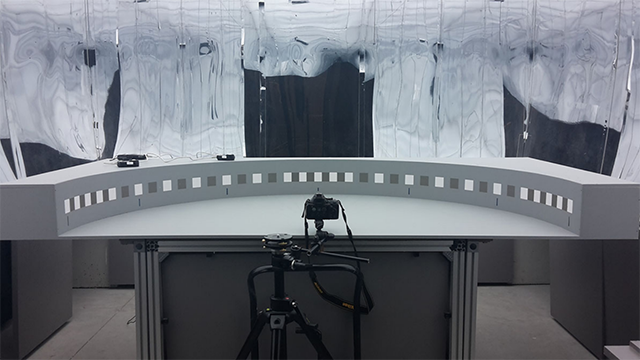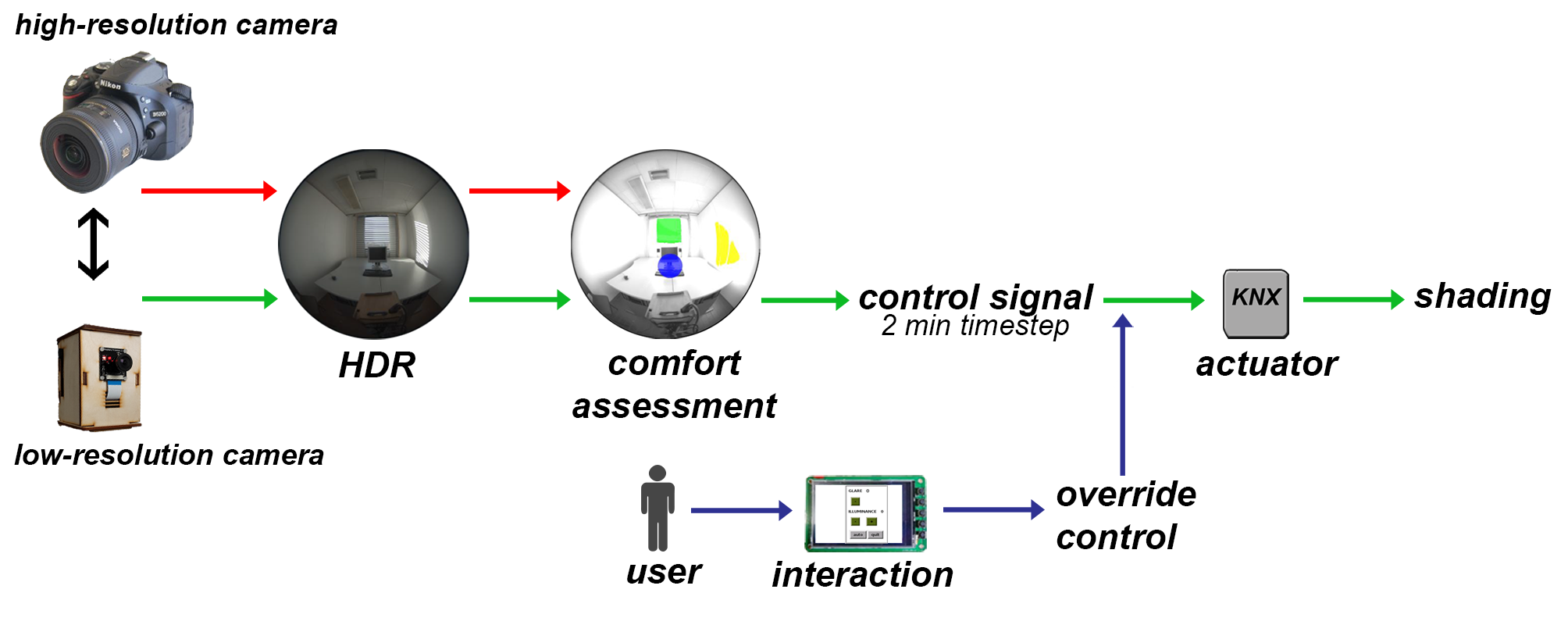
Ph.D. Thesis by Dr. Charlotte Goovaerts, Vrije Universiteit Brussel (VUB), Department of Architectural Engineering
Daylighting in offices creates a comfortable and healthy working environment for its users. Additionally, it can decrease the electricity consumption for artificial lighting. However, maximizing the amount of daylight can cause some issues. In Northern European climates, visual discomfort is the most negative side effect from windows. Also, excessive short-wave directly-transmitted solar radiation and long-wave indirectly-transmitted energy can cause thermal discomfort and an increased energy demand for cooling. To counterbalance these problems, designers implement shading systems, which control the transmitted solar and visual radiation. Different control strategies exist, but researchers evaluate their performance merely by checking the impact on the energy need, without considering the visual comfort of the user. Furthermore, the acceptance and satisfaction of the user regarding these strategies remains low.
Therefore, we developed a control strategy that is based on the comfort requirements of the users. The control strategy aims at avoiding visual discomfort for the user, while optimizing for daylight availability and improving user satisfaction. This is the first study where a shading device is controlled by a controller system with a low-resolution camera. The controller system captures luminance maps and evaluates a visual comfort parameter, namely the ’Daylight Glare Probability’. The system controls the actuator of the shading device based on the assessed level of comfort. The user can override the automated control and the controller system will adapt itself to the preferred user set-point.
This thesis uses numerical simulations of an indoor environment to check the performance of the control strategy in terms of the impact on the energy consumption and the visual and thermal comfort. Next, the thesis demonstrates two experimental case studies where the low-cost controller system and the control strategy are implemented. The controller system keeps the discomfort glare below the predefined limit and reduces the cooling demand, while sufficient daylight can still enter the office room.




